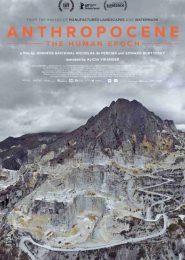The Slow Poisoning of India (2012)
In the heart of India, where lush green fields stretch as far as the eye can see, a silent crisis unfolds. The Slow Poisoning of India, a compelling 26-minute documentary, directed by Ramesh Menon and produced by The Energy and Resources Institute (TERI), delves into the perilous consequences of excessive pesticide use in Indian agriculture.
The film paints a vivid picture of the intricate web connecting farmers, crops, and the environment. Here are the key takeaways:
- Pesticides and Their Impact:
- Indian farmers, driven by the promise of higher yields, have embraced chemical pesticides. However, these toxic substances seep into the soil, water, and air, affecting not only crops but also the health of communities.
- The film reveals how pesticides disrupt ecosystems, harm beneficial insects, and contaminate water sources. The slow accumulation of these chemicals poses a grave threat to biodiversity.
- Human Health at Stake:
- The documentary introduces us to farmers who handle pesticides without proper protective gear. Their skin absorbs these chemicals, leading to skin disorders, respiratory issues, and even cancer.
- Children playing in pesticide-laden fields unknowingly expose themselves to long-term health risks. The film underscores the urgency of safeguarding future generations.
- Alternatives and Sustainable Practices:
- The Slow Poisoning of India doesn’t merely highlight problems; it offers solutions. Organic farming, integrated pest management, and crop rotation emerge as viable alternatives.
- By showcasing success stories of farmers who have transitioned to sustainable practices, the film inspires hope. These resilient individuals prove that change is possible.
- Collective Responsibility:
- The documentary reminds us that our choices matter. As consumers, we can support organic produce and demand transparency in food labeling.
- Policymakers, too, play a crucial role. Stricter regulations, awareness campaigns, and incentives for sustainable farming practices can transform the landscape.
In conclusion, The Slow Poisoning of India serves as a wake-up call. It urges us to question the status quo, advocate for safer agricultural practices, and protect our planet. As we watch the sun rise over pesticide-laden fields, we must remember that our actions today shape the well-being of generations to come. Let us choose wisely—for India, for our world.




